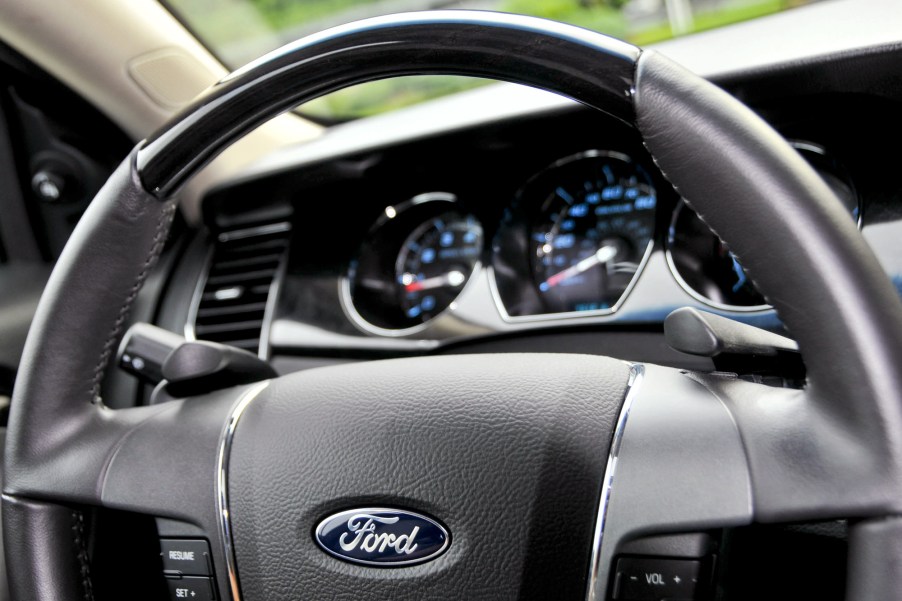
Explained: An Automatic Car With a Manual Transmission Mode
The very first automatic transmission ever made dates back to the 1920s, and it wasn’t long before the automatic transmission was refined and put into automobiles. The first automatic transmission, patented by Alfred Horner Munro, used air pressure. However, two Brazilian engineers, Fernando Lehly Lemos and José Braz Araripe invented the automatic transmission that set the gold standard. These engineers invented the first hydraulic automatic transmission, which was quickly bought by General Motors and engineered into the Hydra-Matic transmission in the 1940s.
In the 80 years following the production of the Hydra-Matic automatic transmission, the automatic transmission has become the standard transmission for many cars around the world. While the dated manual transmission has been on its way out for years now, usually only being placed in sports cars and fuel-sipping economy cars, there is another option for those consumers looking to keep a little more control over their gear shifts; a manual transmission mode. Here is what you need to know about automatic transmissions with manual transmission modes.
What is an automatic transmission?
An automatic transmission is any transmission that changes gears automatically, hence the name. The alternative to this transmission is the manual transmission, which is a transmission that requires the driver to operate a clutch and change gears for the car. Per Car and Driver, two automatic transmission types are torque converter automatic transmissions and continuously variable transmissions, or CVTs.
Torque converter automatic transmissions use hydraulic fluid. This fluid, along with a torque converter that allows the engine to spin freely without the transmission at all times, uses fluid pressure to change gears. CVT transmissions use a belt and pulleys, which continuously change the ratio of the transmission for optimal fuel economy and performance. While fluid is used to help the CVT’s belt find friction, this fluid is different than the fluid used in typical torque converter transmissions.
CVTs have recently found their way into mainstream cars due to their ability to find optimal fuel economy and their ability to drive smoothly. Without physical gears, CVTs offer smooth driving experiences without notable gear shifts.
How to drive an automatic car in manual mode
Many automatic transmission cars today have a “manual mode”, which is simply an automatic transmission that allows you to stay in gears as long as you want for optimal performance, or for the feeling of total control over the vehicle that a manual transmission offers. Traditional automatic transmissions will often have a manual select feature on the gearshift or paddle shifters behind the steering wheel, which you click up or down to change gears.
Some CVT transmissions found in vehicles today have a manual mode as well, but since these transmissions do not have physical gears, the manual mode is simply giving you simulated gear changes when placed in manual mode.
Truthfully, almost every automatic car ever made technically has a “manual mode.” On classic automatics, it is common to see “1,2,3” next to Drive on the gearshift. Placing your vehicle in “2” ensures your vehicle shifts between 1st and 2nd gear, without going higher than the gear you selected.
Does an automatic car in manual mode save gas?

Because cars with manual transmissions historically get better fuel economy than their automatic counterparts, many drivers seem to think that if they shift into manual mode on their automatic transmission, they are bound to find the perfect shifts for optimal fuel economy. Today, however, that isn’t true. With automatic transmission engineering and technology advancements, automatic transmissions, especially CVTs, offer better fuel economy than many manual transmission cars.
Manual modes on automatic transmissions are typically there for the fun factor. With a manual mode, you can control the car to the full extent whenever you want, or shift back into regular automatic mode when you want to relax and take the hard work away from the driving experience.
The best of both worlds
With current automatic transmissions offering better fuel economy than most manual transmissions, and with just about every automatic transmission offering a manual or sport mode, you really can get the drivability and excitement of a manual transmission with the convenience of an automatic transmission anytime.
Most sports cars still offer manual transmissions in their lineups, but with many sports cars such as the Chevrolet Corvette axing their manual offerings for advanced, fast-shifting, dual-clutch automatic transmissions, there isn’t too much love and excitement lost for these sports cars that are losing a traditional clutch pedal.



